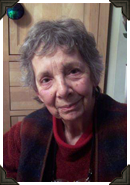
I first read about the 1837 rebellion in the Canadas years ago when I was living in Toronto. It was a small rebellion in the history books but I couldn't help wondering how small it felt to the people who lived on my peaceful streets back when those streets weren't at all peaceful. Like all writers of historical stories, I always daydream myself back to the times and places that catch hold of my imagination. So, of course, I sent myself back to Toronto in 1837 conjuring up the violence, the confusion, and the fear.
I was working on another historical story at that time so, with a sigh and a promise that one day I would write the 1837 rebellion story, I stuffed those thoughts and feelings into the back of my mind. And there they stayed. Then, some years later (oh, happy day) I got a letter from Scholastic asking me if I would like to write a Dear Canada diary. At once the rebellion story jumped to the front of my mind.
But diary? Diary meant that I would have to write as though I, myself, were the heroine of my story. I could not just be the author looking over her shoulder, I had to get inside her head to write her story. I had never written a story in the first person. What a challenge! I wasn't at all sure this was going to work for me. It did work. I hadn't written more than half a dozen pages when I knew that this was exactly how I wanted to tell the rebellion story.
During the many months I was writing the story, I almost was twelve-year-old Arabella Stevenson living in Toronto in 1837. I walked those streets, I grieved Arabella's father's imprisonment, suffered her humiliation, scrubbed pots, put up with Sukey's unfriendliness, was warmed by Mrs. Parliament's kindness. I went through all of it and I loved it all; being there, getting to know long-ago Toronto was wonderful. I loved writing Arabella's story for Dear Canada.